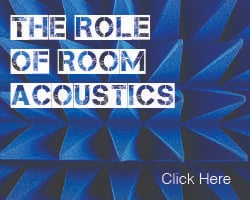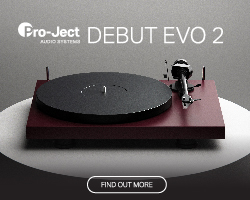British loudspeaker brand Mission has launched its new flagship range of loudspeakers. The ZX Series represents the pinnacle of Mission’s current line-up, joining the speakers from the entry-level LX Series and mid-level QX Series.
ZX builds on the success of QX, taking key elements and enhancing them across the board. New drive units, motor systems and crossover networks were developed for the project, wrapped in a smoothly curved cabinet and embodying Mission’s traditional adage since the 1970s: “Music is the master. Technology is the slave.”
Eight Models
The ZX Series comprises eight models: two standmount speakers (ZX-1 and ZX-2), three floorstanders (ZX-3, ZX-4 and ZX-5), two home cinema centre speakers (ZX-C1 and ZX-C2) and a surround speaker for on-wall siting (ZX-S).
Mission Ring Dome Treble Unit
The Mission Ring Dome treble unit found in every ZX Series model is unlike traditional dome tweeters, the centre of the textile dome is fixed, and the voice coil is attached partway down the dome. This forms the dome into two rings with the voice coil in the centre, enabling it to drive the dome more accurately and efficiently. The result is lower distortion and performance at frequencies up to 30kHz and beyond.
Rearward radiation from the Mission Ring Dome unit vents into an enclosed chamber filled with damping material, acting like a dedicated ‘cabinet’ for the high-frequency unit. Resonances are absorbed and the back pressure on the dome is reduced.
DiaDrive Bass
Some years ago, Mission pioneered DiaDrive bass/midrange drive units, where the usual cone and dust cap arrangement is replaced by a seamless curvilinear diaphragm. This is directly driven by a secondary sub-cone connected to the voice coil, improving the efficiency of drive and providing better control of the diaphragm.
Mission has steadily improved DiaDrive since pioneering the design, culminating in its ultimate form in the ZX Series. The seamless diaphragm is made from an advanced aluminium matrix, while the subcone is vented to remove trapped air behind, thus reducing resonance and improving midrange clarity.
The smoothly dished diaphragm is coupled to a distinctive inverted surround, connected not at its edge but part way down the cone, which serves to damp travelling waves moving towards the diaphragm’s outer edge. The inverted surround has a vented cover to control its spurious output.
The ZX Series DiaDrive units benefit from large, powerful magnet systems. Considerable power is exerted by the driver motor systems and it is critically important that these motors, which are surrounded by the magnet, are held stable. Put simply, the diaphragm should be the only part that moves; the magnet should remain entirely static. To achieve this, Mission has built special bracing systems inside the ZX Series cabinets that precisely locate and brace the drive unit magnets.
Specially made damping material is strategically placed internally to absorb unwanted energy within the cabinets. This works in tandem with slot-shaped reflex ports exiting at the rear of the cabinets; the flair of these ports is serrated, which helps to smooth the high-pressure airflow, while the asymmetric shape breaks up the ‘chuffing’ sound that can be produced by ordinary circular ports.
Mission’s Inverted Driver Geometry
There are two sizes of DiaDrive units in the ZX Series – one with a 130cm diaphragm used throughout the range, the other with a 165mm diaphragm reserved for the bass drivers in the largest floorstander, the ZX-5. In the case of the ZX-1 compact standmount model, the DiaDrive unit is positioned according to Mission’s Inverted Driver Geometry (IDG) – the bass/mid driver is sited above the treble unit rather than below, to aid time-alignment.
This unusual arrangement has been a Mission trademark since the 1980s. Placing the bass/mid driver closer to ear level with the treble unit positioned beneath helps to equalise the path lengths from the two drivers’ acoustic centres, so that the sound waves coincide at the listener’s head height.
The other stereo models, from the ZX-2 to the ZX-5, extend IDG to a full D’Appolito array, siting the treble unit between a pair of DiaDrive units – one above, one below. The ZX-2 and ZX-3 are configured as two-way speakers, with both DiaDrive units covering bass and midrange. The ZX-4 and ZX-5 add additional bass drivers in a three-way configuration, with separate drivers dedicated to low and midrange frequencies.
Crossovers
The best crossovers are simple in terms of signal path but sophisticated in their circuit design; Mission’s IDG configuration aids this design by ensuring the path lengths from bass/mid and treble units is partially equalised by the time the transients from each driver arrive at the listener’s ears.
Months of testing was undertaken to deliver crossover networks of the highest quality to compliment the ZX Series’ driver configurations, starting with technical measurements in Mission’s anechoic chamber and ending with fine tuning of each crossover component by ear, using a wide variety of musical styles and sources.
Price & Availability
The Mission ZX Series is available from the end of November finished in a choice of gloss-lacquered black or white. RRPs are as follows:
ZX-1: £599 per pair ZX-3: £1099 per pair ZX-5: £1599 per pair ZX-C1: £499
ZX-2: £749 per pair ZX-4: £1299 per pair ZX-S: £599 per pair ZX-C2: £599
Get all the latest Hifi News with Hifi Pig here!















































































































































































































You must be logged in to leave a reply.